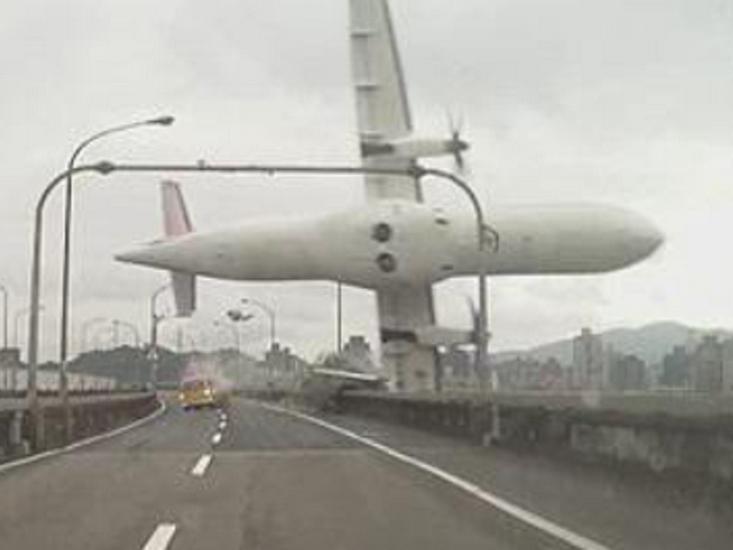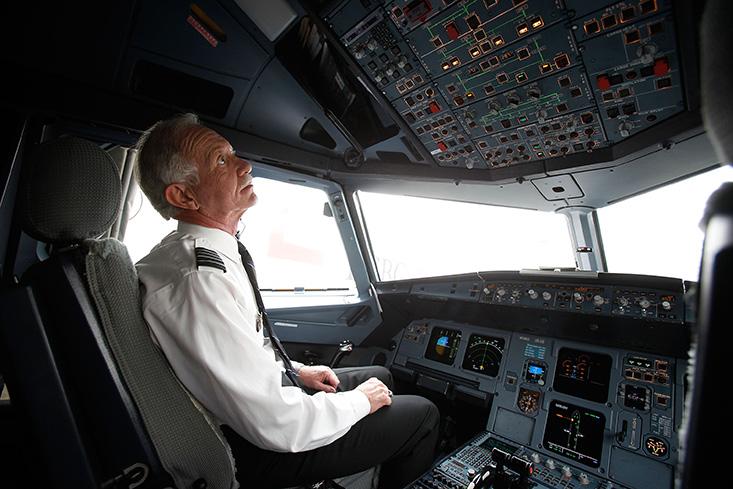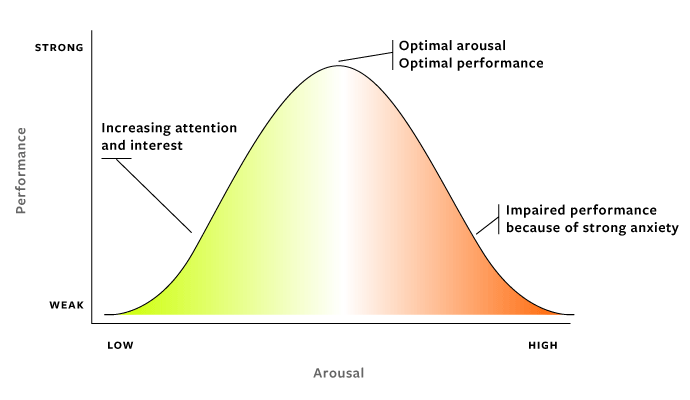The morning of Feb. 4, 2015, was drearily normal in Taipei. With the sky blanketed in low clouds, pushed by a moderate breeze, the day was neither hot nor cold, neither stormy nor fair. For many of the passengers that filed aboard TransAsia Airways Flight 235 at Songshan Airport, the journey ahead promised to be similarly workaday: not a jaunt to some exotic clime, but an hour-long puddle-jump across the Taiwan Strait to the city of Kinmen, where many of the passengers had family and work obligations.
At the front of the plane, 42-year-old captain Liao Chien-tsung and 45-year-old first officer Liu Tzu-chung strapped themselves into their seats and ran through their pre-flight checklists. Shortly after 10.30 a.m. the last of the passengers settled into their seats and the cabin crew closed the doors. As the plane started to move, passenger Lin Ming-wei had a hunch that one of the engines sounded funny, and requested that he, his wife, and their 2-year-old son be seated on the right side of the aircraft.
With practiced efficiency, Liao guided the ATR 72-600 along the network of taxiways to Runway 10. After receiving permission to take off, he rolled forward and swung the plane over the centerline. Engine throttles full forward, the twin turboprop engines roared and shook as each machine’s six blades chopped the air.1 Liao released the brakes, and the plane leapt forward. The airspeed indicator slid past 116 knots as the plane’s nose, then main wheels, lifted from the runway.
This moment—when a plane transitions from ground vehicle to air vehicle—is the most critical in aviation. It is the part of each flight when a plane has the least altitude, is moving the slowest, and carries the heaviest mass of fuel. Given how much happens in a short span of time, it’s also the most mentally demanding. As Liao felt the seat press into his back, his eyes flitted from the instrument panel to the runway and back. Simultaneously he had to keep the plane centered on the runway, monitor its speed and acceleration, pay attention to the radio, and keep alert for signs of malfunction.
How could evolution burden us with a faculty so ill-suited to survival? How could an expert pilot make a beginner’s mistake?
Normally this critical phase is over within a few minutes. But every once in a while something goes wrong. For TransAsia 235, that day was today.
At 10:52 a.m., the plane soared past the end of the runway at an altitude of 350 feet, its wheels tucking up into the underbelly as it climbed steeply over the Keelung River. From this height, the pilots could take in the sprawl of Taipei, a dense metropolis ringed on all sides by mountains, with the Keelung’s serpentine course wending its way through a valley to the east. Liao held the plane in a right-hand bank, curving from east to southeast toward the heart of the city. Then one of the engines started to emit a disconcerting high-pitched whine. Moments later, a warning indicator flashed in the cockpit. The engine had failed.
For any pilot, losing engine power is a nerve-wracking experience. Engine failure in a plane like the ATR-72-600 is not in itself a catastrophe. It’s an eventuality that the planes are designed for—it’s why they have multiple engines—and pilots train for. But Liao had to take the right steps immediately. His heart pounding, he knew that he had to throttle back the stricken engine and turn it off to reduce the risk of fire. Once that was done, he’d have enough power from the remaining engine to maintain altitude and maneuver back to the airport for a safe landing.
The plane’s black boxes recorded what happened next. Liao reached forward and pulled back on one of the engine throttle levers. But he pulled back on the left one—the one for the good engine. Now the plane was 1,000 feet over one of the most densely populated cities in the world, 25 tons of metal, fuel, and human flesh, with no engines to keep it in the air. A worrisome but manageable problem had suddenly become an imminent and severe one.

The human brain has been described as the most complicated thing in the universe. It is capable of breathtaking feats of intellectual prowess and stunning leaps of creativity. Yet it is also capable of utterly failing us when we need it most. In the throes of a life-or-death crisis, human beings have an innate tendency to panic. Instead of taking necessary action to save our lives, many of us do the wrong thing, or nothing at all. Why? How could evolution burden us with a faculty so evidently ill-suited to the business of survival? How could an expert pilot make a beginner’s mistake?
For millions of years, when our ancestors faced danger, they relied on the fight-or-flight response, a suite of hormonal and behavioral adaptations mediated by a branch of the brain called the sympathetic nervous system. The fight-or-flight response was a kind of autonomic “go bag” that could quickly reconfigure the body’s settings for vigorous action.
We’ve all felt the physical effects: racing heart rate, shallow breathing, trembling, and sweaty palms. The mental effects are just as profound. In a state of heightened arousal, we lay down memories with great intensity, become insensible to pain, and experience an apparent slowing down of time.
Like a line of dominoes, a relatively minor problem can generate a feedback loop that quickly explodes into full-blown panic.
In this aroused state, we experience what’s known as “cognitive tunneling.” Our attention narrows as we focus on the danger at hand. An elevated heart rate and quickened breathing ensures that well-oxygenated blood reaches the muscles. The opening of the sweat ducts reduces the risk that exertion will lead to overheating. Cognitive tunneling means that all mental resources are focused on the main threat.
Yet there is also a flipside. With a narrowed focus it becomes hard to multitask, to think complex thoughts, to decipher instructions, or to generate novel solutions. Our judgment can be clouded, and experience thrown out the window. In extreme cases, we lose the ability to consciously control our behavior at all, and find ourselves willy-nilly engaging in ancient stereotypical behaviors like fighting, running, or playing dead.
Psychologists have identified an optimal level of sympathetic-nervous-system arousal for peak performance. In general, automatic or “mindless” behaviors peak at higher levels of arousal, while more intellectually demanding tasks peak at lower levels. A test-taker sitting down to the SAT will benefit from a small spurt of adrenaline to stay focused and energized; a jogger who suddenly finds himself chased by an angry dog will benefit from having every available physiological resource dumped into the mindless pumping of his legs.
Lilianne Mujica-Parodi, the director of the Laboratory for Computational Neurodiagnostics at Stony Brook University, who has studied the effects of intense fear on humans, points out that one of the reasons fear causes us problems in the modern world is that the response evolved in an environment in which life-and-death threats were pretty simple. “In an evolutionary setting, the threat is physically present,” she says. In that context, cognitive tunneling is an asset: “If you’re running away from a tiger, you can attend a problem like that directly. You don’t need a lot of cognitive room for planning or rumination.”
The problem is that the dangers we face today are best handled at a lower level of fight-or-flight arousal. “The stresses we experience are often abstract, and the cognitive skills that we require are actually disassociated with the actual threat,” Mujica-Parodi says. “So you’re asking the brain to do something that in an evolutionary setting would be adaptive, but in your current setting is maladaptive.”
In other words, when a pilot who’s managing a complex modern airliner realizes that his plane is going to crash, he needs the mild fight-or-flight response appropriate for taking a multiple-choice test, but what he gets is a five-alarm response better suited for surviving an animal attack.
In the cockpit of TransAsia 235, Liao’s state of heightened sympathetic-nervous-system arousal had enabled him to take swift action to shut down a stricken engine, but it reduced his ability to think through what he was doing and recognize the context of his actions. We’ll never know exactly what was going through his head, but one thing is clear: The engine he shut down was the wrong one.
As he guided the plane along its planned departure route, he apparently did not immediately take in the significance of what had happened, and continued to hold the plane’s nose high in order to climb. But a plane with no engine power is not going to gain altitude for long. Bleeding speed, it lofted up to 1,350 feet, held there for a moment, then began, inevitably, to fall.
As the stall alarm blared, Liao and Liu seem to have finally realized what was happening. The plane was losing altitude fast. Instead of continuing toward the crowded city center, Liao banked to the left to follow the course of the Keelung River. He or Liu called the control tower: “Mayday, mayday, engine flameout!”
For people in the grip of a life-or-death emergency, fear has a tendency to spiral. In the 1950s, psychologist Hugh Kohn conducted studies on the effects of stress in which he threatened to give people electric shocks. The threats disrupted their perception and concentration on tasks, creating a “vicious circle” in which “the perception of a poor performance results in an emotional experience, which acts to further decrease the efficiency of performance.” In other words, physiological and mental manifestations of the fear response are themselves unfamiliar and powerful, leading to further fear. Like a line of dominoes, a relatively minor problem can generate a feedback loop that quickly explodes into full-blown panic.
A common, deadly mistake of overwhelmed pilots is to put their plane into an aerodynamic stall. When a plane is flying slowly at low altitude, there’s an instinctive human reaction to want to move away from the immediate danger and pull back on the controls to gain altitude. Doing so, however, can have exactly the opposite effect. Climbing causes an airplane to slow down, and if its airspeed falls below a critical velocity, the wing dramatically loses its ability to generate lift. Instead of gaining altitude, the plane suddenly drops, often with fatal results. From the very start of flight training, pilots are taught to be extra careful not to raise the nose when low and slow. But every year, pilots panic, forget their training, and die.
The panic spiral is not inevitable, though. When faced with intense danger, some pilots manage to keep their wits about them and fly exactly as they should.
The most celebrated example in recent times is, of course, the “Miracle on the Hudson.” On Jan. 15, 2009, Chesley “Sully” Sullenberger was at the controls of an Airbus A320 passenger plane with no engine power just minutes after taking off from LaGuardia Airport in New York City. He found himself gripped by terror. The moment he lost his engines, Sullenberger later wrote, “was the most sickening, pit-of-your stomach, falling-through-the-floor feeling I had ever experienced.”

Sullenberger was able to stay mindful of what he needed to do. Keeping the nose low to maintain airspeed, he radioed air traffic control to discuss his options for an emergency landing. After weighing a turn-back to LaGuardia, and a straight-on approach to Teterboro Airport in New Jersey, Sullenberger managed to improvise a third option: to glide down over the top of the George Washington Bridge and ditch in the Hudson River. It was not an easy decision; no one had ever before pulled off such a ditching without fatalities. But Sullenberger had the presence of mind to identify the best among an array of bad choices and commit to it. In the minutes that followed he played his hand masterfully, controlling his speed so that at the moment of touchdown he was moving neither too slowly nor too fast. Not only did the plane remain intact, it stayed afloat long enough for all the passengers to disembark safely onto rescue boats.
What’s the difference between Sullenberger, who was able to innovate solutions in the face of imminent death, and Liao, who apparently panicked and shut down the wrong engine? It’s a question that researchers like Mujica-Parodi have puzzled over for decades and still haven’t completely nailed down.
Physical fitness seems to play a role. Mujica-Parodi has conducted experiments that measure the stress of first-time skydivers. (They jump with electronic sensors on their bodies.) She found that subjects with a lower body mass index had lower stress-hormone levels and performed better on cognitive tasks. There may also be a genetic component: Polymorphisms in the gene for the mu-opioid receptor, located on neuron membranes, and related to hormone release and inhibition, seem to affect how individuals respond to stress. At this point, however, only one factor seems clear-cut, and that is training. We can prepare ourselves for specific dangers by practicing the necessary response to them over and over again.
“The trick is to take a task with a lot of moving parts and put it in muscle memory,” Mujica-Parodi says. Once a skill is so well-learned that a person can perform it without conscious attention, it is no longer affected by cognitive tunneling and so is not degraded by increased stress.
The tragedy of TransAsia 235 is a reflection of the pitfalls of being a human in a complex and stressful environment.
Erin Bowen, the chair of the Behavioral and Safety Science Department at Embry-Riddle Aeronautical University, agrees about the importance of training, emphasizing that it has to be the right kind. She points to the work of K. Anders Ericsson at Florida State University, who has demonstrated that expert performance requires deliberate practice in which a person regularly and consciously seeks to identify and master specific skills. “If you engage in mindless practice, and disengage your brain so that you just go through the motions, you’re not really focused on the task at hand,” Bowen says. The key is to get your actions and awareness in perfect harmony through practice.
Sullenberger was superbly trained. Not only did he have nearly 20,000 hours of flight-time, he was also an experienced glider pilot and aviation safety expert. When it came time to act, he didn’t have to think creatively or juggle multiple streams of thought. To him, what he had to do was simple.
TransAsia 235’s crew may well have had Sullenberger’s example in mind as they turned to follow the course of the Keelung River, but with just 5,000 hours of flight time, Liao may not have had basic aeronautical instincts wired into his system to the same extent. Holding the nose too high so that it remained just on the edge of a stall, Liao could see his altitude draining away. Unlike the Hudson River, the Keelung is narrow and winding. Just ahead of the plane’s path, it took a sharp turn to the right, then followed a more-or-less straight course for about a mile—not an ideal ditching spot, but the best within sight. Liao and Liu struggled to restart their good engine as Liao put the plane into a broad right-hand turn to intersect the river’s straight section. One final obstacle lay in their way: an elevated highway that ran along the right-hand riverbank. It must have seemed to Liao that if he could just milk a little bit more altitude, he might just clear it. It was a fatal temptation. Pulling back too hard on the controls, Liao put the left wing into a full aerodynamic stall. With only the right wing now providing lift, the plane rolled over into a 90-degree bank, clipped the highway, inverted, and crashed into the river upside-down.
Of the 58 passengers and crew, only 15 survived. Among them were Lin Ming-Wei and his family, whose decision to move across the aisle proved prescient, as the right side of the plane was less severely damaged by the impact. Both Liao and Liu were killed. When rescuers reached Liao’s body, they found his hands still clutching the controls.
We will never know Liao’s precise mental state on the morning of February 4. Subjective human experience is not easily untangled by science. What air crash investigators can do, however, is establish the mistakes that pilots make, and try to change things like training syllabi, maintenance procedures, and cockpit layout to minimize the chance that they’ll happen again.
At one level, the tragedy of TransAsia 235 is the story of one man’s failure. But at another level, it’s a reflection of the pitfalls of being a human in a complex and stressful environment. The panic spiral is a fundamental feature of our nervous system. Our saving grace is that while evolution has endowed us with a fatal flaw, it’s also given us the smarts to work around it.
Jeff Wise, a science writer and private pilot, is the author of Extreme Fear: The Science of Your Mind in Danger and The Plane That Wasn’t There: Why We Haven’t Found MH370.
































